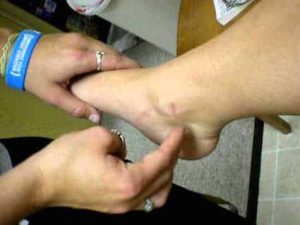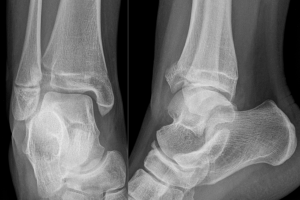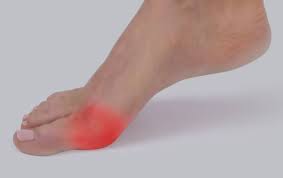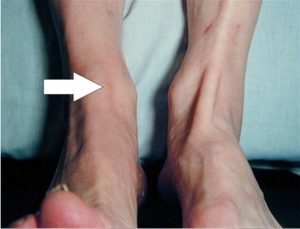The Takakura Classification is a tool developed to aid surgeons and physicians in diagnosing and managing ankle arthritis. This condition can lead to discomfort and restricted mobility, particularly among individuals with ankle joint wear and tear or injury. By categorising the different stages of ankle arthritis, the Takakura Classification offers insights into its progression, facilitating the creation of personalised treatment approaches to address the specific needs of each patient.
The Takakura Classification is a widely used system for categorizing different stages of ankle arthritis based on radiographic findings. Let’s take a closer look at the stages outlined by this classification:
Stage I: Early Signs In this initial stage, X-rays show the presence of early sclerosis and the formation of osteophytes (small bony outgrowths). Importantly, the joint space remains intact without any noticeable narrowing. This suggests that the condition is in its early phases and intervention at this stage could help prevent further progression.
Stage II: Medial Joint Narrowing As ankle arthritis advances to Stage II, we observe the narrowing of the medial joint space. Despite this narrowing, there is no direct contact between the subchondral bone (the bone just beneath the joint cartilage). This stage indicates moderate progression and signals the need for closer monitoring and potential interventions to manage symptoms.
Stage IIIA: Medial Malleolus Affected In Stage IIIA, the joint space at the medial malleolus (the inner part of the ankle) is completely obliterated, and the subchondral bone is now in contact. This indicates a significant loss of joint space and potential discomfort. Treatment strategies may need to become more focused and proactive at this point.
Stage IIIB: Roof of Talar Dome Involvement Continuing the progression, Stage IIIB involves the obliteration of the joint space over the roof of the talar dome (the top part of the talus bone in the foot). Subchondral bone contact is observed, further highlighting the severity of the condition. Prompt and targeted intervention becomes increasingly important to manage pain and prevent further damage.
Stage IV: Complete Tibiotalar Contact In the final stage of the Takakura Classification, the joint space is completely obliterated, and there is direct tibiotalar contact. This suggests advanced arthritis with significant joint degeneration. Treatment options at this stage might include more aggressive interventions to alleviate pain and improve quality of life.
The Takakura Classification is a valuable tool that assists surgeons in understanding the progression of ankle arthritis. By identifying distinct stages of the condition based on radiographic findings, medical experts can tailor treatments to address specific needs. Whether through conservative measures or surgical interventions, the goal is to manage pain, restore function, and enhance the overall well-being of individuals with ankle arthritis. If you suspect you may have ankle arthritis, consulting a medical professional is crucial to receive an accurate diagnosis and appropriate management.








